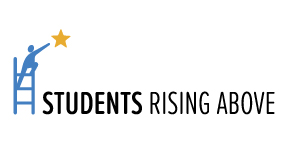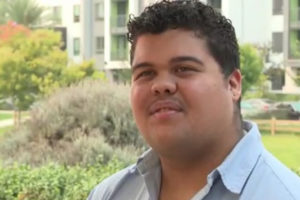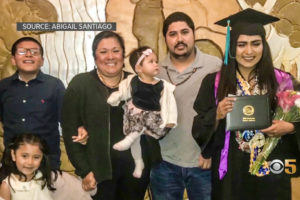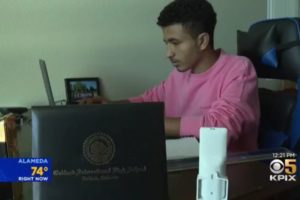For First-Generation College Students, More Peer Support, Scholarships, and Resources
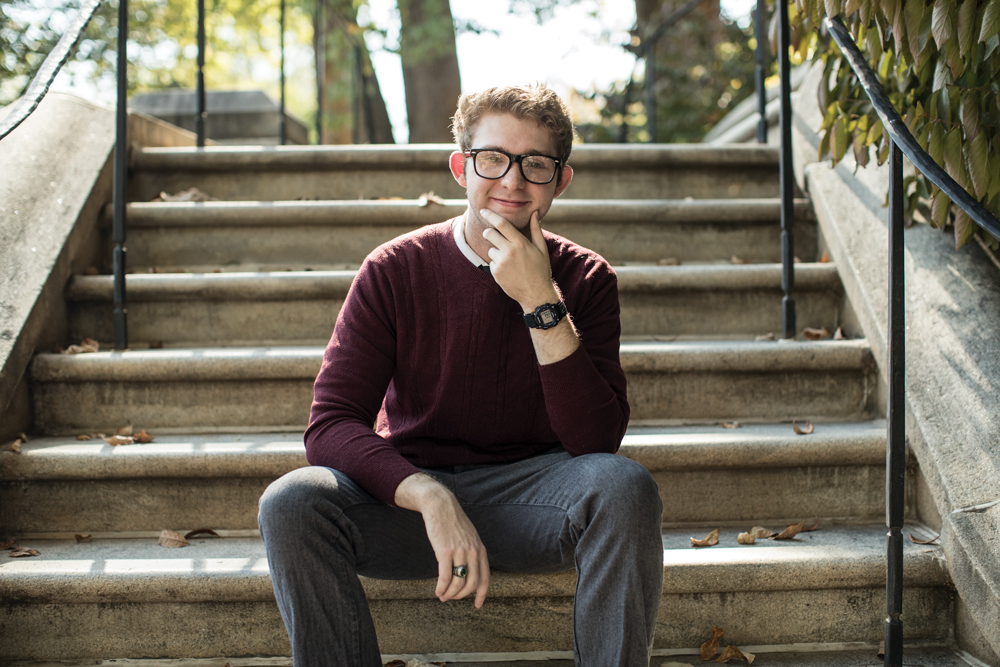
Josh Farris grew up in the tiny town of Shawsville in Montgomery County, VA, just two hours west of Charlottesville, home to the University of Virginia (UVA). But walking among UVA’s red brick colonial buildings as a freshman in 2015 felt like traveling to a different world. He had never even toured the campus before he was admitted.
“I felt like I couldn’t relate to other students or my family,” says Farris, who is the first in his family to attend college. Contrasted with the average UVA student, who comes from a family earning more than $155,000 each year, Farris’ childhood included periods of homelessness and a father who had served time in prison. Neither of his parents went to college, and when he started at UVA, Josh had a hard time explaining campus life to his mother.
“I went almost an entire year without my Mom [understanding]what was going on,” he says. In addition to carrying a full course load, Farris also works a few hours a week at the campus writing center to send money to help his parents and brother, who is currently serving time in jail on drug charges.
An expanding generation
While Farris may feel lonely, he is not alone. On campuses nationwide, an increasing number of students are the first in their families to pursue higher education. A 2018 study conducted by the Center for First-generation Student Success, part of the National Association of Student Personnel Administrators (NASPA), reports that one- third of undergrads are first-generation college students.
But campuses don’t agree on a clear definition for “first-generation.” Does it refer to students whose biological parents didn’t graduate from college? What about parents who attended a community college, or who graduated from a college outside of the United States?
The most commonly accepted definition of a first-generation college student is that “neither parent earned a four-year college degree.” That’s the definition used by the federal government. Since 1980, the U.S. Department of Education (DOE) has identified first-generation status as a factor—along with low income or disabilities—in determining who gets services through TRIO programs, federal initiatives that identify and provide services to students from disadvantaged backgrounds.
Back in the 1980s, not everyone in higher education agreed on whether being the first in a family to go to college really merited additional support. Sarah Whitley is the senior director of NASPA’s Center for First-generation Student Success. Whitley says that first-generation students often lack the college-going knowledge that helps young people with the many decisions they must make, even before they are accepted. “We don’t know how much support they have in navigating the application process, financial aid forms, decisions about what to take to college,” she says.
To help bridge those gaps, the DOE funds programs to help marginalized but promising kids. High school students may be eligible to spend weeks living and learning on a college campus through the DOE’s Upward Bound program. High-performing middle and high school students may be identified through the Talent Search program to receive academic counseling, mentoring, or other support. Often, first-generation students participate, along with kids from other backgrounds. A few colleges, like Chapman University in Southern California, run summer bridge programs aimed at helping first-generation college students acclimate to campus culture.
In fact, it was an Upward Bound program that gave Farris his first experience on a college campus. While still in high school, he spent three summers living in a dorm on the Virginia Tech campus, 20 minutes away from his hometown, which made him comfortable with college life. He was able to get the fees for his SAT exams waived. Later, he won a full scholarship to UVA from the California nonprofit QuestBridge, which connects high-performing, low-income students to colleges and scholarship opportunities.
Support along the way
In the last decade, four-year colleges have been focusing more attention on first-generation students. “After the 2008 recession, you started to see a different type of student wanting to go to college,” says Whitley. “We have seen a major population shift to more and more low-income, underrepresented students attending college.”
How can universities help these trailblazing scholars? Many campuses bundle services for first-generation students with programs for underrepresented minorities or low-income students, often locating support services, offering meetings for small groups of students, in places like campus multicultural centers or the financial aid office. However, Whitley says that while first-generation status often intersects with poverty or racial marginalization, only about 40 percent of first-generation students are low income.
A danger is that students who don’t have support are at a high risk of dropping out of college. The NASPA analysis also reports that only 27 percent of first-generation students will earn a bachelor’s degree within four years. Even that information may be incomplete, as data on these students often comes through self-reporting. In other words, people have to choose to check a box on a form, something they may be embarrassed to do. “If a student sees “first-generation” on a college application, they often perceive it as being a detriment to their chances, so they don’t check the box,” explains Whitley, who adds that many institutions are actively seeking first-generation students.
Some of the most successful campuses are changing the way they approach these students. Instead of viewing their background as a liability to graduating, these colleges consider first-generation students—and the perspectives they bring—an asset to campus.
Building a college-going culture
What can be done to help younger kids—in high school, middle school, or even elementary school—set their sights on higher education, even if their family members don’t have that experience? For Farris, that inspiration came in the form of a second grade teacher. “I was kind of a bad kid when I was young,” he says. “I used to push teachers off of ladders.” He recalls teacher Elaine Belay, whom he described as “really mean,” but who left birthday cards on his desk. She recommended him to the gifted and talented program. Another influential adult, his eighth grade teacher, Vicki Kitts, read his poetry and encouraged him to aspire to college.
Besides encouraging promising young students individually, K–12 educators and librarians can foster a college-going culture. Even at the elementary school level, teachers and librarians can do simple things like decorating their walls with pennants and university mascots. Whitley recommends that teachers who were the first in their families to attend college take pride in telling kids that they are first-generation. NASPA has designated November 8 First-Generation College Day, in honor of the signing of the 1965 Higher Education Act, which helped millions of low-income students become the first in their families to earn college degrees.
At the Landsdowne Public Library outside of Philadelphia, children’s librarian Rachée Fagg holds a weekly youth discussion called “Life After High School.” There, teens can ask current college students what it’s really like on campus.
Ali Schilpp, librarian at Northern Middle School in rural Accident, MD, and 2018 SLJ School Librarian of the Year, considers herself a mentor for students who strive for higher education. She helps graduating eighth graders select courses, such as AP U.S. History, that will prepare them for the rigors of college. “I really feel high school librarians would be the perfect advocates for students, to help with applications and essays, provide time and space, and be aware of deadlines and details that might be overlooked by families unfamiliar with the college process,” says Schilpp, whose own son is the midst of applying to college. “It was challenging for us, even though we both went to graduate school and work in education. I can’t imagine how many missed opportunities there are because the process can be overwhelming!”
The common thread among first-generation success stories seems to be the presence of mentors and a support system. Jessica Castro graduated from El Cerrito High School in California’s Bay Area. No one in her family had attended college, and her high school had only two guidance counselors for more than 1,500 students.
She attributes her success to the mentorship she received from the group Students Rising Above (SRA), which provides support systems for low-income, college-bound students. The nonprofit grew out of a scholarship program started in 1998 by TV news anchor Wendy Tokuda. But organizers soon realized that financial aid was just one hurdle for these students. Many didn’t succeed in college because they didn’t know how to navigate the world of higher education and professional employment.
The program evolved into a five- to six-year mentorship, beginning with identifying potential students during their junior year in high school and helping them transition into careers after graduation. During the college application process, Castro spoke on the phone daily with an adviser, who also grew up in Richmond, east of San Francisco, and attended the same high school. Castro was accepted to thre University of California at Santa Cruz.
“There were times when I wanted to go back home and help my family,” she says. But mentors encouraged Castro to stick it out and explore possible career options by applying for internships. Now, one year after graduating with a bachelor’s degree in sociology, she is employed by SRA doing data support. While SRA can only serve about 100 students in the Bay Area through in-person mentoring, the organization is starting an online hub designed to be a virtual way to get answers to questions and access some of the same resources.
The Posse Foundation is another nonprofit that helps diverse students—including many first-generation—transition to college by organizing small cohorts of students from the same region to attend university together. The organization was started in 1989 with five New York City students who were awarded scholarships to attend Vanderbilt University. Since then, the organization’s partner colleges have awarded more than $1.2 billion in scholarships.
Even the Common Application, the online platform that coordinates applications to over 800 campuses, is getting into the game. In September, the nonprofit organization announced that it is acquiring Reach Higher, an initiative started by former first lady Michelle Obama to make college more accessible.
Students helping one another
Increasingly, students are forming first-generation campus groups. In 2015, students at Brown University started 1vyG, an organization for first-generation and low-income students at Ivy League schools and other elite universities. In February 2019, the group will host its fifth annual conference, this time at Princeton University. This movement among Ivy League students has inspired other college organizations. One of them is Al1gn (Alliance for the Low-Income & First-Generation Narrative); Josh Farris is now co-chair of the third-annual conference, which will be held on the UVA campus in March 2019, following events at George Washington University in 2018 and Barnard College in 2017. Farris, now a fourth-year student studying youth and social innovation, plans to make the conference his capstone project, with his sights set on a career in education.
